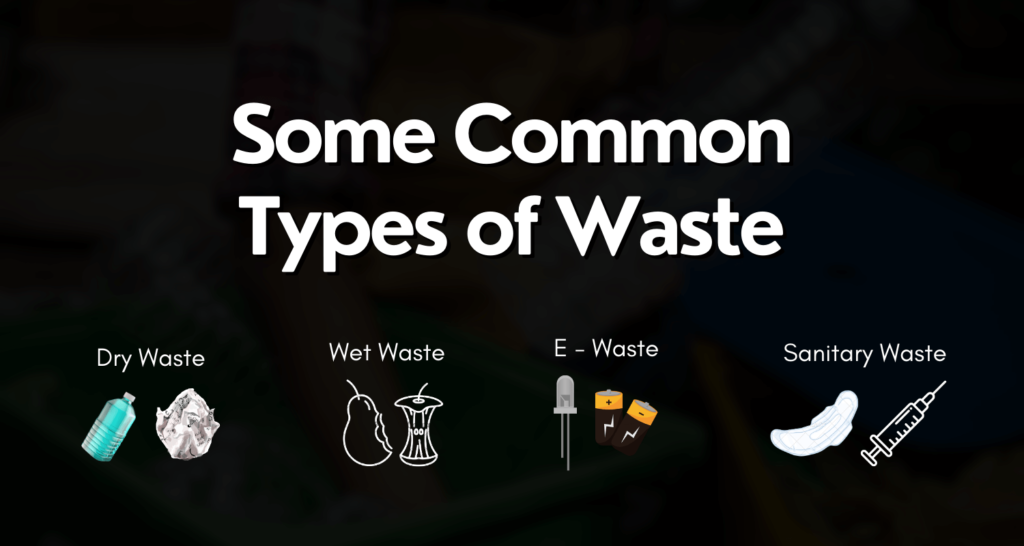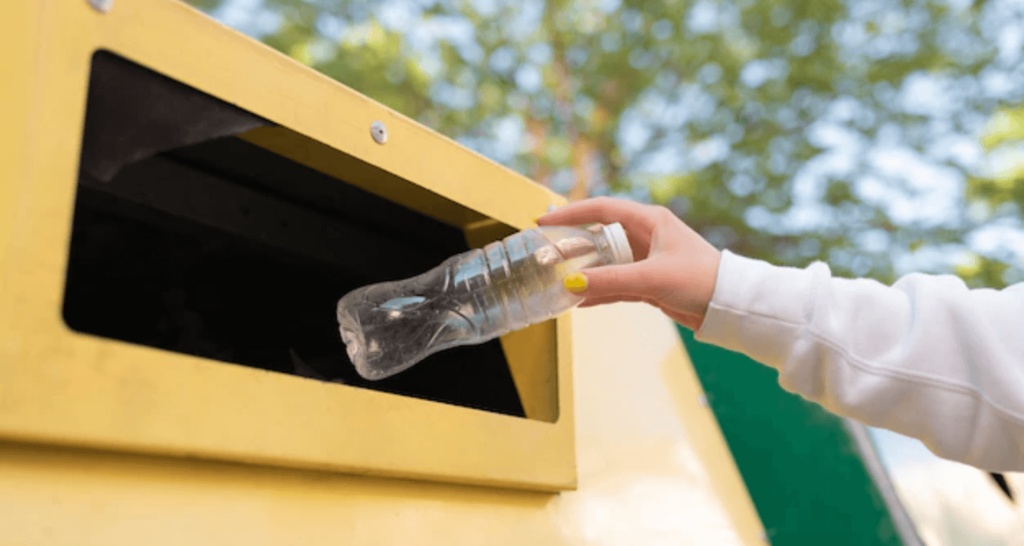Waste segregation refers to the act of identifying, categorizing, splitting, and sorting waste in order to minimize wastage, reuse, and recycle resources. Waste segregation helps to reduce the load on landfills, conserve resources, and foster a cleaner, healthier environment when done efficiently. According to a study, waste segregation tactics can reduce up to 250 tonnes of dump from entering into landfills. In this blog, we’ll try to look at the types of waste, the significance of waste segregation, government initiatives for waste segregation, and some practical waste segregation strategies that people, groups, and organizations may use to help create a more sustainable future.

Categorization of Waste
It’s important to accurately identify the type of waste created in order to properly segregate it. According to their biological, physical, and chemical characteristics, waste is identified and categorized into the following groups for the purpose of waste segregation:
- Dry Waste: It refers to all the goods that aren’t considered dirty or moist. Both recyclable and non-recyclable goods fall under this category. Bottles, cans, textiles, plastic, wood, glass, metals, and paper are some common examples.
- Wet Waste: It refers to all organic materials, including food, soiled food packaging, hygiene products, yard waste, tissues, and paper towels, as well as any other soiled material that could contaminate recyclables.
- Sanitary Waste: It refers to all the waste (liquid or solid) that comes from human activity. It may also contain waste from the medical industry
- Hazardous household waste: It refers to all household products that contain corrosive, poisonous, ignitable, or reactive chemicals excluding used oil.
- E-waste: It refers to all types of electronic trash.
- Hazardous Waste: It refers to all objects that have corrosive, poisonous, ignitable, or reactive chemicals in them.
- Inert Waste: It refers to waste materials that are difficult to decompose and are neither chemically nor biologically reactive.
If we talk about the significance of waste segregation, it is necessary because some wastes can be dangerous and have the potential to spread illness, harm water sources, contaminate land, and can degrade the environment. Waste that is not separated may become polluted if it is kept with other forms of waste. Such material cannot be handled or treated, thus it usually ends up in landfills or local dump yards. Waste segregation makes it possible to handle various waste types. This contributes to less rubbish being disposed of in landfills or dump yards. Therefore, waste segregation is important for a sustainable environment and living.
The government’s cleanliness mission launched on October 1, 2021, Swachh Bharat Mission (SBM-U) 2.0 has a five-year goal of reaching garbage-free status for all cities through 100% source segregation, door-to-door collection, and scientific management of all fractions.
Some waste management actions that can be taken by us are as follows:
- Prevention: Avoiding the creation of trash in the first place is the best strategy to manage it. This entails cutting back on consumption, repurposing goods, and forming sustainable shopping habits.
- Reuse: Reusable items should take precedence over single-use substitutes. To increase the lifespan of objects like bags, containers, and furniture, we should promote reuse.
- Recycling: Paper, cardboard, glass, and plastic are among the materials that can frequently be recycled to create new goods. To make sure that they are processed properly we should separate recyclables from other types of waste.
- Recovery: For non-recyclable garbage, energy recovery techniques like waste-to-energy incineration can be used to produce energy while minimizing environmental effects.
- Disposal: The last option for disposing of waste that cannot be avoided, reused, recycled, or recovered should be a landfill.
For efficient waste management, a system of waste segregation must be established in our houses and localities. Some are:
- Colored Bins: Use different containers for different types of waste, such as blue containers for dry waste, green containers for wet waste, red containers for sanitary waste, grey containers for e-waste, and black containers for hazardous waste. Proper color coding makes waste segregation easy.
- Proper Signage: Bins should be marked with concise, educational labeling that details what should go in each container. To make sure that everyone is aware of the segregation regulations, provide text and graphics.
- Education and Awareness: To inform people of the value of waste segregation and the proper way to do it, we can conduct workshops, seminars, and awareness campaigns.
Household Waste Segregation
At the household level, we can use these tactics to ensure effective waste segregation:
- Kitchen Composting: Create a composting system in your kitchen to help you separate organic waste from other garbage. Composting reduces landfill waste by converting food scraps into nutrient-rich soil.
- Smart Disposal Practice: Learn about the rules in your area for disposing of trash, and abide by them strictly. Make sure to dispose of dangerous materials like batteries and electronics correctly.
- Choosing Reusable Items: Reduce single-use plastic waste by using reusable containers, bottles, and shopping bags.
Community Initiatives
Communities can improve waste segregation by working together:
- Community recycling initiatives: To promote participation and make recycling more accessible, plan neighborhood-wide recycling drives and pickup activities.
- Facilities for communal composting: For residents who may not have enough space for individual compost bins, set up communal composting facilities.
- Waste collection drives: To avoid illegal dumping, keep specified days for the removal of heavy goods like furniture and appliances.
Commercial and Business Waste Management
Businesses play an extremely important role in the segregation of garbage:
- Recycling programs: Implement recycling initiatives at work, using bins that are properly marked and training staff about waste segregation
- Sustainability of the supplier: Encourage suppliers to use eco-friendly products and packaging to cut waste at the source.
- Garbage audits: Set goals for waste reduction and evaluate waste generation and disposal methods frequently to spot areas for improvement.
Sustainable waste management is built on effective waste segregation. We can considerably reduce our environmental impact and work towards a cleaner, greener future by comprehending the waste hierarchy, building a segregation system, and putting these strategies into practice at the household, community, and company levels. In the fight against trash pollution and resource depletion, remember that even the smallest effort matters, and that when we work together, we can achieve great things.


Effectively written and well explained. It actually took up important areas from the existing stuff mentioned already.
The emphasis on prevention as the primary strategy for waste management is a great reminder that reducing consumption and adopting sustainable habits can have a significant impact.
Colored bins and proper signage are practical suggestions for efficient waste segregation at the household level, making it more accessible for individuals to participate in sustainable practices.
The mention of kitchen composting adds a personal touch, showing how individuals can take small yet impactful steps in waste reduction right at home. The community initiatives section is inspiring, promoting the idea that collective action within neighborhoods can lead to more accessible and widespread recycling opportunities.
The inclusion of business waste management strategies reinforces the idea that sustainable waste practices extend beyond individual efforts, involving businesses in creating a cleaner, greener future. It’s great you added that necessary part.
I appreciate the inclusion of government initiatives like Swachh Bharat Mission, highlighting the collective efforts toward achieving garbage-free status and promoting source segregation.